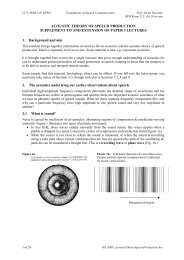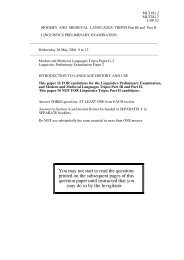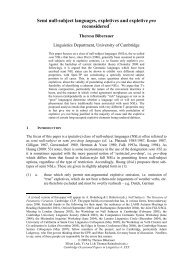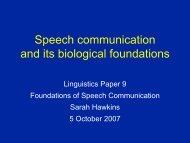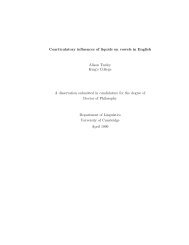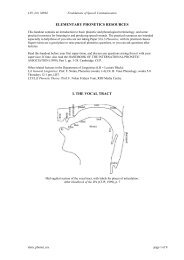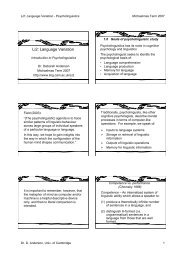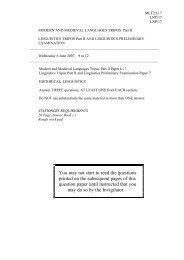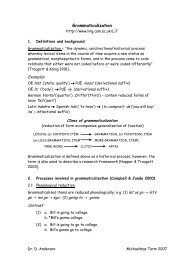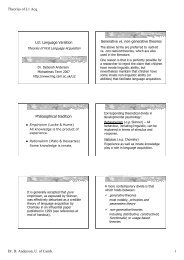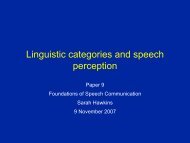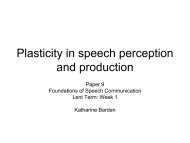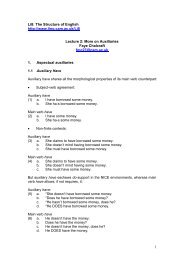ACOUSTIC THEORY OF SPEECH PRODUCTION ... - Ling.cam.ac.uk
ACOUSTIC THEORY OF SPEECH PRODUCTION ... - Ling.cam.ac.uk
ACOUSTIC THEORY OF SPEECH PRODUCTION ... - Ling.cam.ac.uk
Create successful ePaper yourself
Turn your PDF publications into a flip-book with our unique Google optimized e-Paper software.
Paper 9 etc: M4_AcThSpProd 17 of 20<br />
Figure 19.<br />
F2 high (> 1500 Hz)<br />
i<br />
1500<br />
F2 low (< 1500 Hz)<br />
u<br />
F1 low (< 500 Hz)<br />
´<br />
500 Hz<br />
a<br />
<br />
F1 high (> 500 Hz)<br />
The resultant frequencies of such constrictions can be calculated fairly precisely, but for our purposes<br />
it is enough to understand that, by making a constriction in the appropriate location along the tube,<br />
you can shift the formant frequencies of schwa so that you hear another vowel quality, as we did with<br />
the electrolarynx and tube, and that the limits of such shifts for a given vocal tr<strong>ac</strong>t length define the<br />
limits of the vowel quadrilateral.<br />
Other vowels can be added using various principles, for example:<br />
• “filling in” sp<strong>ac</strong>es between the extremes<br />
• nasalization (normally broadens and flattens spectral prominences in F1 region, tending to<br />
make most nasalized vowels sound slightly centralized)<br />
• changing the lip rounding<br />
• changing duration, voice quality, etc<br />
M4_0708_AcousticTheorySpeechProduction_07-8.doc



